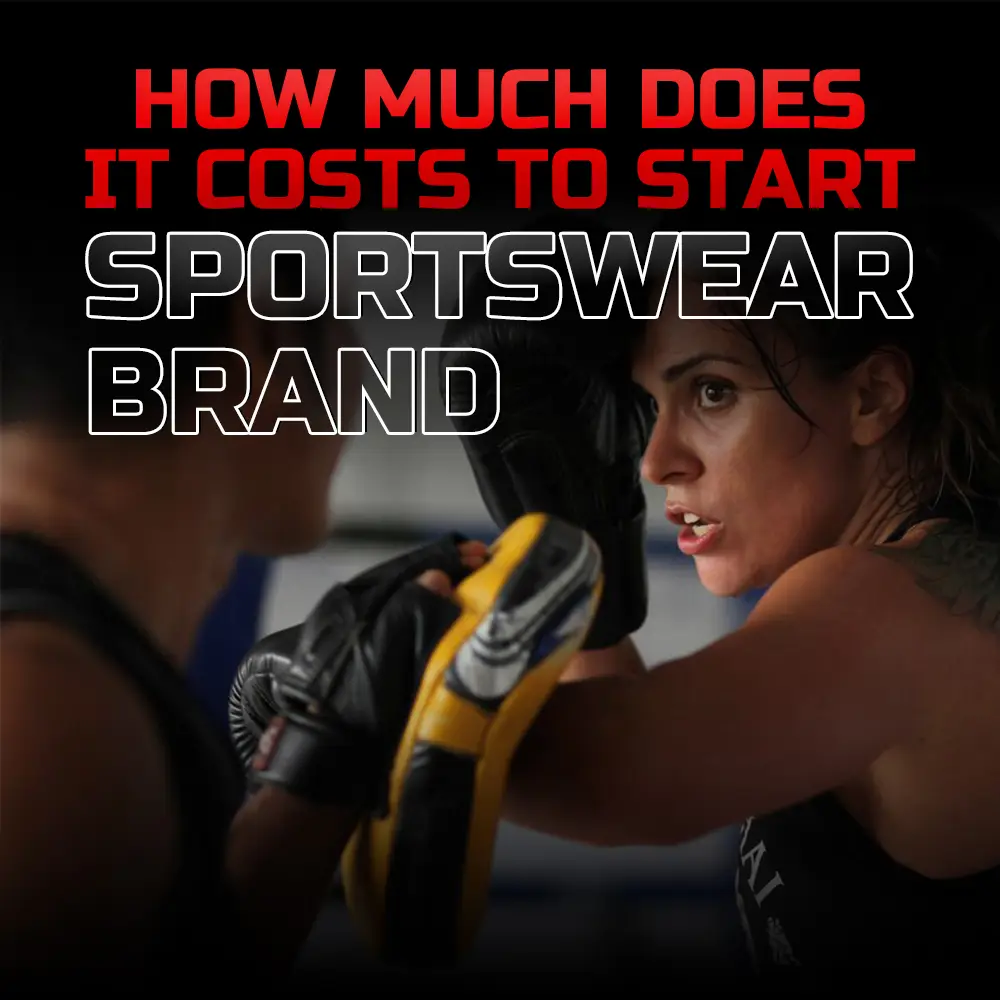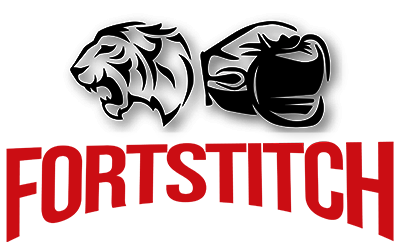How Much Does It Cost to Start a Sportswear Brand?

Have you ever dreamed of starting your own sportswear brand but stopped to ask, “How much money do I really need?” You’re not alone. Many new business owners want to join the fast-growing custom sportswear industry but feel confused about the real costs.
The truth is, building a brand is more than just making T-shirts or leggings. You need to think about design, materials, production, website, marketing, and even shipping.
In this guide, we’ll break down all the possible costs of starting a sportswear brand in simple steps. This way, you can make smart choices, avoid hidden expenses, and build a brand that customers can trust.
On average, starting a small sportswear brand can cost anywhere between $5,000 and $15,000 if you keep things lean with limited designs and online sales. For a medium-sized launch with more products and professional marketing, costs often range between $25,000 and $50,000. Large-scale operations with retail presence can even go beyond that.
Understanding the Sportswear Market
The sportswear industry is one of the fastest-growing in fashion, as people now wear sportswear not only for workouts but also as everyday clothing (athleisure). Big brands like Nike, Adidas, and Under Armour have set high standards, but there’s still room for new businesses that focus on unique designs, affordable prices, or sustainable fabrics.
When you study the market, ask questions like:
- Who is my target customer: Athletes, gym lovers, or casual wear users?
- What type of products should I sell: Activewear, streetwear, or both?
- What are customers looking for: Comfort, performance, or eco-friendly materials?
Understanding this will guide your budget and help you make smart decisions about where to spend and where to save.
Competitor Analysis
Now that you know the sportswear market is growing, the next step is to study your competitors. Examining what other brands are doing will help you determine how much money you may need to allocate for design, marketing, and production.
Big names like Nike, Adidas, and Under Armour spend millions on research, athlete sponsorships, and marketing. Of course, new brands don’t need that huge budget, but it shows how much competition values branding and quality. On the other hand, smaller niche brands focus on aspects such as sustainable fabrics, affordable gym wear, or unique styles to stand out without incurring significant expenses.
When you study competitors, ask yourself:
- What products do they sell and at what price?
- How do they promote their brand (social media, influencers, events)?
- What makes them different, and how can I offer something better or unique?
By doing a simple competitor analysis, you can set a realistic budget, avoid costly mistakes, and position your sportswear brand in a way that attracts the right customers.
Next, let’s break down the main factors that influence the cost of starting a sportswear brand.
Factors That Influence Startup Costs
After checking your competitors, the next step is to understand what areas will cost you money when starting a sportswear brand. Every brand is different, but most expenses usually fall into these categories:
1. Market Research & Business Planning
Before you spend on products, you need to research your audience and write a business plan. This may include surveys, competitor studies, and small test runs. It doesn’t always cost much, but it saves you from bigger losses later.
2. Branding & Identity
A strong sportswear brand needs a name, logo, and brand design. You may also need professional photos or videos to make your brand look trustworthy. Good branding is an investment because it sets you apart from others.
3. Product Development & Prototyping
This includes designing your sportswear, selecting fabrics, and making samples. You might have to create several prototypes before finalizing a product, which can increase costs.
4. Manufacturing & Production
One of the highest costs is manufacturing. Prices depend on where you produce (local or overseas), the quality of fabrics, and the number of pieces you order. Larger orders usually bring the cost per item down, but require more upfront money.
5. Packaging & Labeling
Custom tags, labels, and packaging make your products look professional. Even small details add to your startup budget.
6. Website & E-commerce Setup
Today’s sportswear brand needs an online store. Costs include domain, hosting, website design, and setting up secure payments. Platforms like Shopify or WooCommerce make it easier but still add to expenses.
7. Marketing & Advertising
You need to spread the word. Marketing costs include social media ads, influencer collaborations, content creation, and promotional campaigns.
8. Inventory & Warehousing
If you hold stock, you’ll need space to store it. Some startups use dropshipping to avoid these costs at the beginning.
9. Shipping & Logistics
Delivering products to customers, handling returns, and international shipping can take a big share of your budget.
10. Legal & Business Registration
You’ll also need to register your company, get licenses, and possibly protect your brand with a trademark.
Understanding these cost factors will give you a clear picture of how much money you might need to start. In the next section, we’ll break these down into estimated startup costs for small, medium, and large-scale sportswear brands.
Estimated Startup Costs Breakdown
Now that you know the main factors that affect your budget, let’s look at the estimated costs of starting a sportswear brand. The actual amount depends on the size of your business and how much you want to invest in each area.
1. Small-Scale Sportswear Brand
If you are starting small, you may use dropshipping or print-on-demand services. This reduces costs because you don’t need to buy stock in advance.
- Branding & logo design: $200 – $1,000
- Website setup: $500 – $2,000
- Marketing: $500 – $3,000 (ads, social media, influencers)
- Samples & product testing: $500 – $1,500
- Total estimated cost: $2,000 – $8,000
2. Medium-Scale Sportswear Brand
A mid-level brand designs its own products and places small batch orders with manufacturers. This requires more investment but gives better control over quality.
- Branding & identity: $1,000 – $3,000
- Product development & prototyping: $2,000 – $6,000
- Manufacturing (small batch): $5,000 – $20,000
- Website & e-commerce: $1,000 – $3,000
- Marketing & promotion: $2,000 – $8,000
- Total estimated cost: $12,000 – $40,000
3. Large-Scale Sportswear Brand
If you want to compete on a higher level, you’ll need mass production, professional marketing, and strong logistics.
- Branding & professional design: $5,000 – $15,000
- Product development: $5,000 – $15,000
- Manufacturing (large batch): $20,000 – $100,000+
- Website & app development: $5,000 – $20,000
- Marketing & sponsorships: $20,000 – $100,000+
- Warehousing & logistics: $10,000 – $30,000
- Total estimated cost: $65,000 – $250,000+
Your actual cost may fall in between these ranges, depending on your goals, supplier choices, and marketing strategy. Next, let’s talk about the hidden costs many new sportswear brands forget to plan for.
Hidden Costs Many Entrepreneurs Overlook
While startup budgets usually cover design, production, and marketing, there are several hidden costs that new sportswear brands often forget. These small expenses can quickly add up if you don’t plan for them.
1. Sample Revisions
You may need multiple rounds of product samples before getting the perfect fit, fabric, or design. Each revision means extra cost.
2. Quality Control
Checking products for defects, hiring third-party inspectors, or reordering faulty batches can increase expenses.
3. Shipping & Customs Fees
Importing fabrics or finished products often comes with customs duties, taxes, and unexpected shipping charges.
4. Returns & Refunds
Customers may return items due to size or quality issues. Handling returns, restocking, or refunding affects your profit margins.
5. Marketing Tests
Not every ad or influencer partnership works. You may need to test different campaigns before finding one that delivers good results.
6. Seasonal Stock Risks
Sportswear is trend-based. Unsold inventory from one season can turn into a hidden loss if not planned properly.
7. Business Insurance
Protecting your stock, website, or business operations may require insurance, which adds to ongoing costs.
By keeping these hidden expenses in mind, you can set a more realistic budget and avoid financial stress later.
Funding Options for Your Sportswear Startup
Even with smart cost-saving methods, you’ll still need money to get your sportswear brand off the ground. The good news is, there are different ways to fund your startup depending on your budget and goals.
1. Bootstrapping (Self-Funding)
Many entrepreneurs start small by using their own savings. This gives you full control over your brand but may limit how fast you can grow.
2. Business Loans
Banks and financial institutions offer small business loans. These can provide quick capital, but you’ll need a solid business plan and a clear repayment strategy.
3. Investors or Venture Capital
If you aim to build a large-scale sportswear brand, you can look for investors. In exchange for funding, they may ask for a share in your business.
4. Crowdfunding
Platforms like Kickstarter or Indiegogo allow you to raise money directly from customers. Pre-orders also act as market validation for your designs.
5. Partnerships
Some startups reduce costs by partnering with gyms, influencers, or fitness communities. This can bring in both funding and ready customers.
Choosing the right funding option depends on how much you need to invest and how quickly you want to scale.
Next, let’s discuss how brand differentiation and positioning can help your sportswear business stand out in such a competitive market.
Supply Chain & Sustainability Considerations
Cutting costs is important, but the future of your sportswear brand also depends on how responsible and sustainable your supply chain is. Modern customers care about values as much as style. Here are some key points:
- Ethical manufacturing
Choose factories that provide safe working conditions and fair wages. Supporting ethical labor not only protects workers but also builds trust in your brand. - Smarter material choices
Fabrics like recycled polyester, organic cotton, and bamboo are popular with eco-conscious buyers. These options reduce environmental impact while giving your brand a modern, responsible image. - Certifications and compliance
Global certifications such as Fair Trade, OEKO-TEX, and GOTS prove that your products meet high standards. They add credibility and make it easier to stand out in a crowded market. - End-of-life strategies
Think about what happens when a product is no longer wearable. Recycling programs or discount returns help reduce waste and show customers that your brand cares about the planet.
By combining sustainable practices with smart planning, you are not just starting a sportswear label—you are building a long-lasting, future-proof business.
Final Words
Starting a sportswear brand can cost anywhere from a few thousand to tens of thousands, depending on your scale. The smartest way is to start small, focus on quality, and grow step by step.
There are risks, but the sportswear market is full of opportunities. With the right planning and passion, your idea can become a successful brand.
